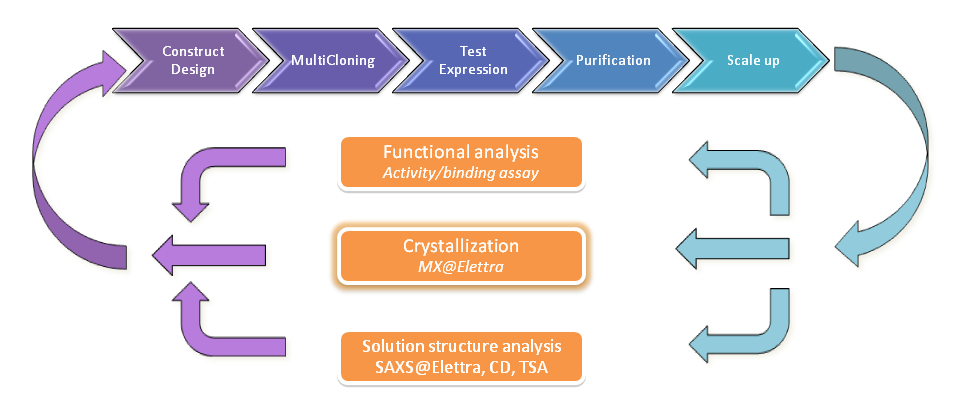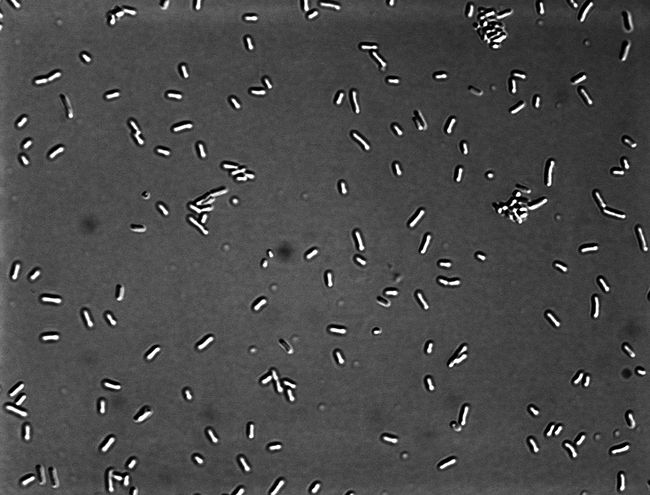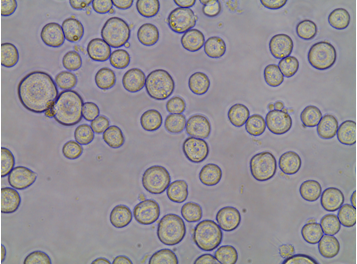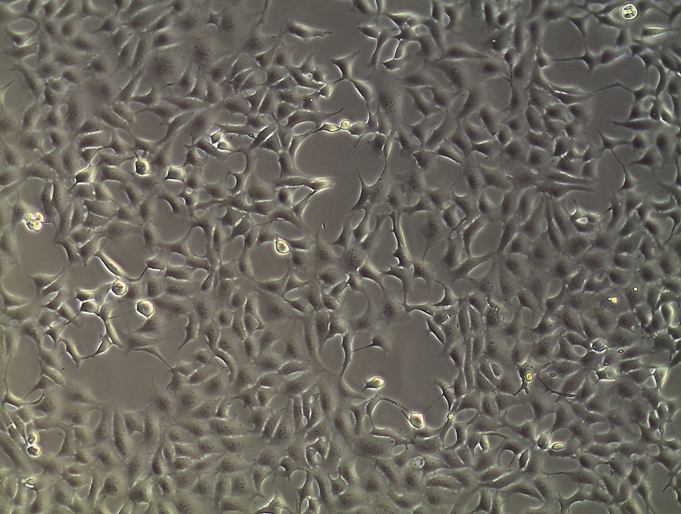

Protein LabIn the framework of the initiatives to strength the structural biology community of the Elettra synchrotron of Trieste we have implemented a core technology facility to express and purify recombinant proteins for functional and structural studies. The aim of the facility is to provide specialized support to academic and industrial users to obtain recombinant proteins suitable for analysis with synchrotron radiation techniques (mainly x-ray diffraction and SAXS). The facility is located within the Structural Biology laboratories of Elettra Sincrotrone Trieste (EST), nearby to the synchrotron radiation ring. The initial set up of the facility has been achieved thanks to PROTEO project. PIPELINE OF COLLABORATIVE PROJECTS About 10 projects are running in parallel: focus on protein targets that are relevant for cancer diagnostic and therapy. The main interest is on two classes of proteins: protein kinases and deubiquitinases.  WORKFLOW It is organized in a stepwise process to go from gene to protein using multiparallel sample handling. We perform semi-automated cloning and expression of multiple protein targets in E.coli and insect cell systems. Mammalian expression is also supported with a manual throughput. The core unit is equipped to clone/express/purify proteins with high efficiency, using rapid cloning (LIC, Gateway, Restriction-Free and Gibson) in multi-sample parallel protocols and Ni-NTA affinity small-scale purification on a robotic platform (Freedom Evo 150 – Tecan). Scale-up protein production and high grade purification are optimized. Obtained proteins are used for bioassays, functional analysis or structural determination.  EXPRESSION SYSTEMS In our laboratory we are using prokaryotic and eukaryotic expression systems.
AUTOMATION Our facility puts an emphasis on high-throughput experimentation. Currently in our lab we are able to perform cloning, test expression and purification using a robotized liquid-handling workstation (Tecan Freedom Evo 150). Setting up crystallisation screen plates is carried out with Mosquito crystallisation robot (TTP Lab Tech) and later controlled by Explora Nova Xtal Focus Storage and Imaging system for the automatic visualization and recording of crystallization experiments.  ANALYTICAL TOOLS Grade of purity and stability is evaluated by various biochemical and biophysical methods. Suitable samples are submitted to crystallization trials. In solution structural characterization is performed using Circular Dichroism and SAXS analysis.  NanoInnovation LabWe use a combination of Atomic Force Microscopy and synchrotron radiation techniques to study the properties and reactions of surface confined biomolecules and of Self-Assembled Monolayers (SAM) of organic molecules often on gold surfaces. Typically, we compare in-situ the properties of one or more monolayer patches of the molecule of interest "grafted" into a SAM with a lithographical technique called nanografing. A general applied aim is to study the way to optimize the fabrication of protein nanoarrays for the study of proteomics and of DNA nanoarrays of high sensitivity, suitable for the genetic characterization of single cells without the use of PCR. Single cell DNA analysis has many applications in medical diagnostics and in analysing the cell type distribution in the brain.  From a more fundamental point of view we aim at studying systematically the behavior of biomolecules at different well characterized densities, to glean from there how they behave under the crowded conditions that prevail typically in a cellular environment. Nanobodies Lab |






